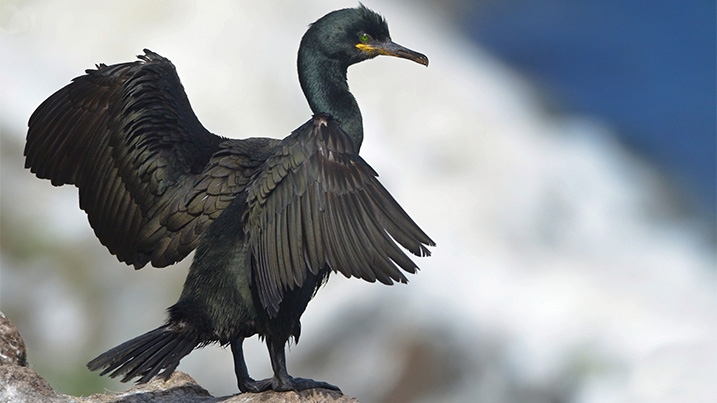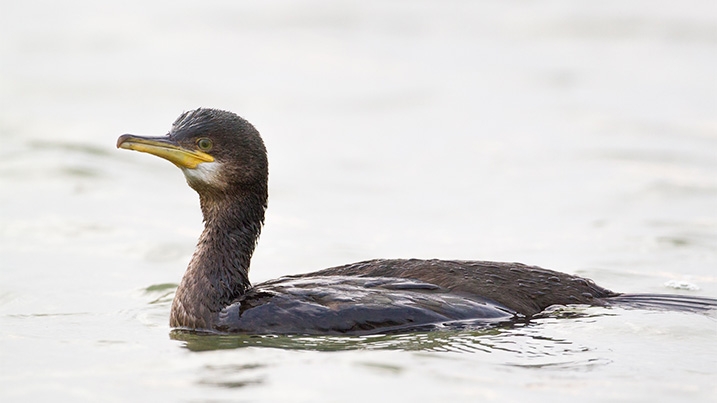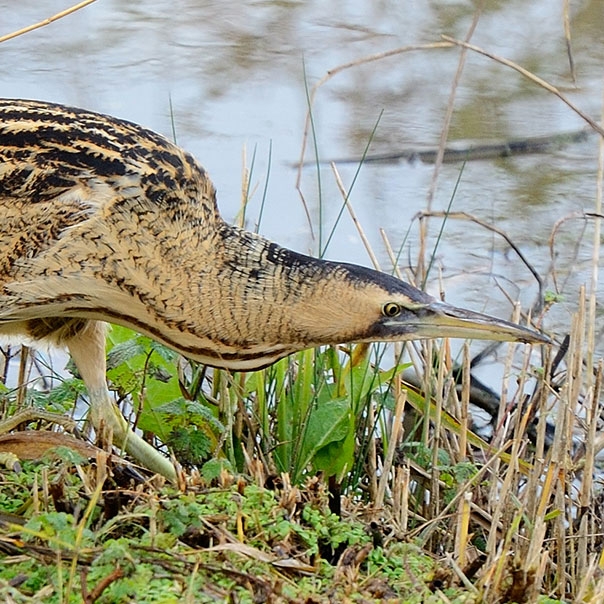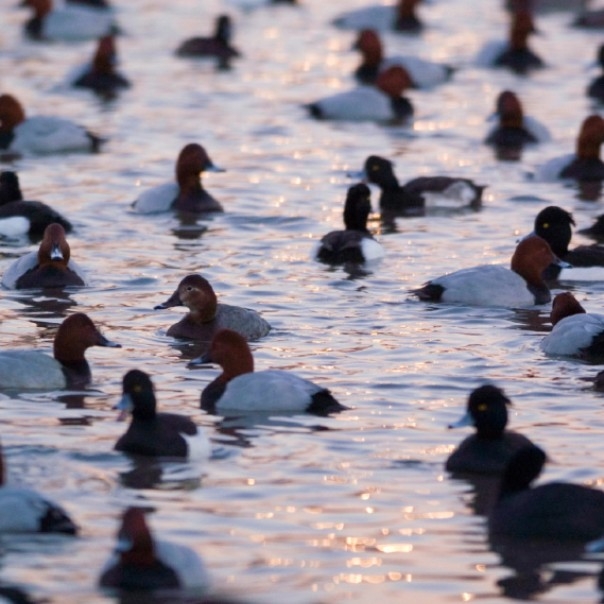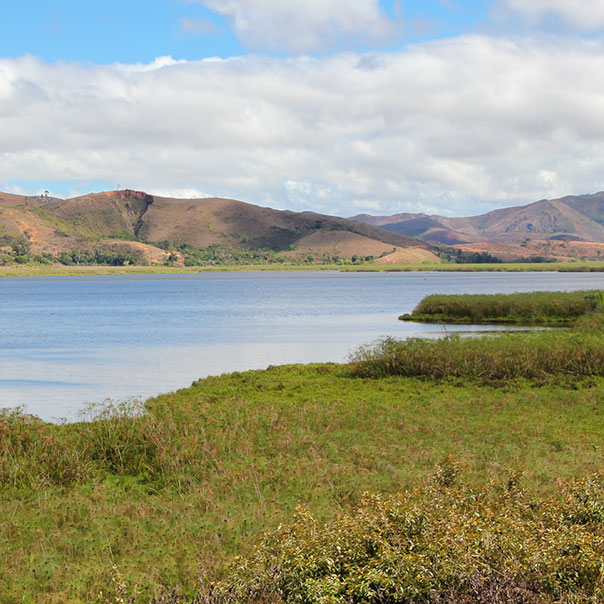Diving birds found in UK wetlands
UK wetlands host a wide array of birdlife, many of them feeding on fish and crustaceans. Diving to reach food is a method chosen by the birds listed here, able to hold their breath for long periods and covering great distances underwater – you never know where they might surface! Sleek bodies and webbed feet allow them to catch their prey with ease.
Depending on where you are in the UK, some species can be found year-round, whilst others are only with us for the summer or winter. Many divers and grebes breed further north, but are seen wintering in the south.
Great northern diver
(Gavia immer)
The largest and heaviest of the three divers you are likely to see in the UK. Like all divers, they have beautiful breeding plumage, with key winter identification points being an angular, square forehead, deep-set bill held level and a thick neck with a dark half collar. Breeds on lakes, with a few hundred pairs in Iceland but most of the population breed across Greenland and Canada. In winter they can be found on lakes, reservoirs and along coasts of the UK, with a more westerly bias than the other divers.
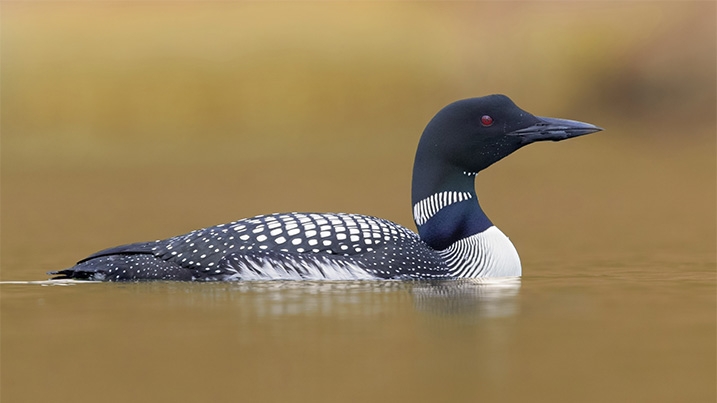
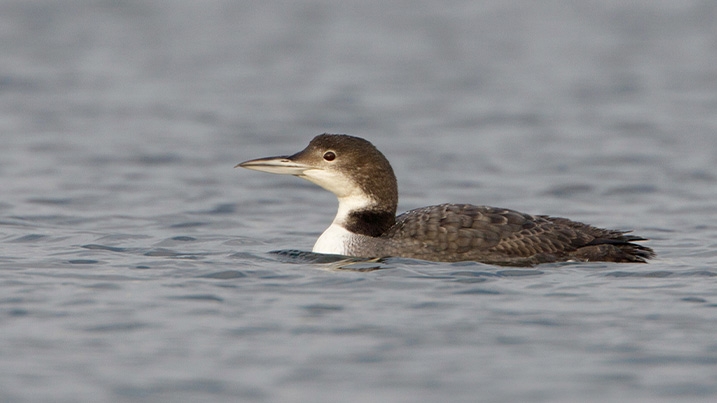
Red-throated diver
(Gavia stellata)
Shows a red throat in breeding plumage, with key winter identification points being a thin bill, tilted upwards and extensive white on the neck. This is the palest, smallest and lightest of the three species of diver that regularly occur in the UK. Breeds in Scotland, Iceland and across northern Europe on small pools. In winter they are mostly a coastal species and are the least likely of the three divers to be seen on freshwater.
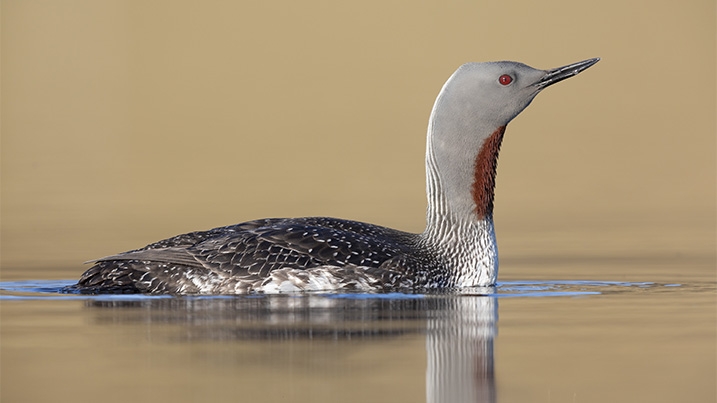
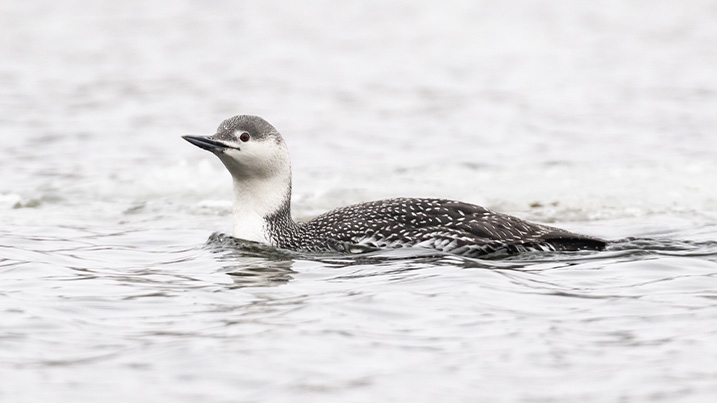
Black-throated diver
(Gavia arctica)
Shows a black throat in breeding plumage, with key winter-plumage identification points being a smooth, rounded forehead, bill held level and body size in-between great northern and red-throated, a white neck and distinct white flank patch towards the rear of the body. Breeds in Scotland and across northern Europe on lakesides. In winter, they are mostly a coastal species but can occasionally be found on freshwater too.
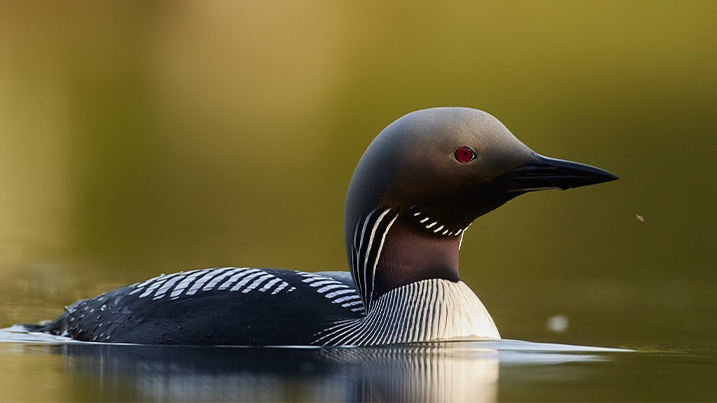
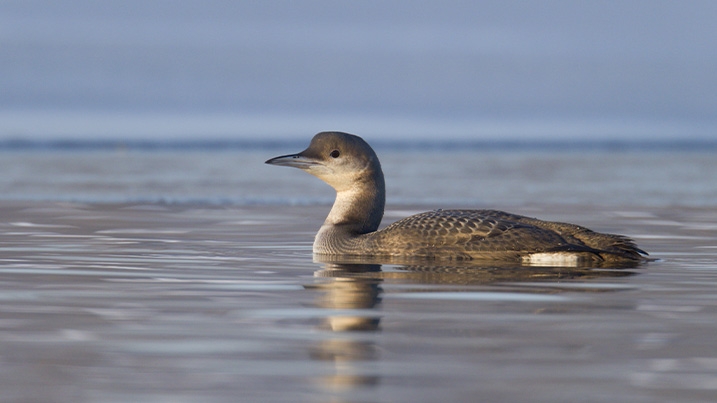
Slavonian grebe
(Podiceps auritus)
Stunning breeding plumage shows reddish body, black back, forehead and neck, with bright yellow head plumes. In winter, can be found on lakes, reservoirs and at the coast, where plumage appears black and white, the head showing a flat crown, peaked at the rear. This makes them look like a great crested grebe in miniature. A very small UK breeding population can be found in the north of Scotland, on vegetated ponds and lakes. They are a more widespread breeder across northern Europe.
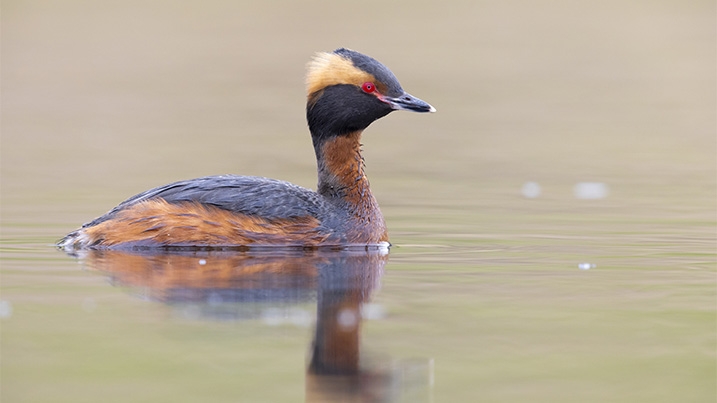
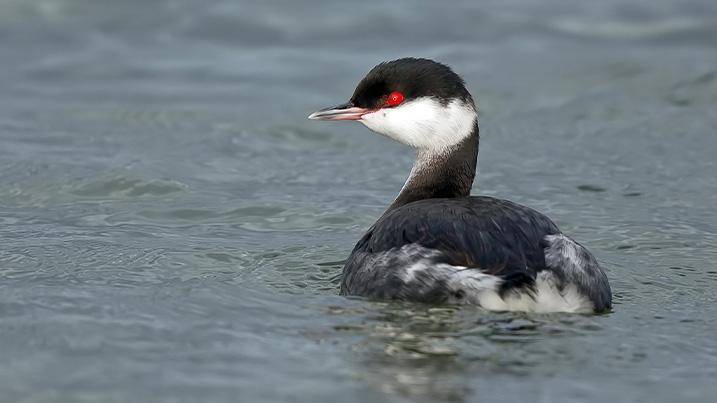
Black-necked grebe
(Podiceps nigricollis)
Size in between Slavonian and little grebe. Breeding plumage shows yellow cheek feathers, black head, neck and back with brown/buff sides. Can be seen in the winter on lakes and from the coast, where plumage appears black and white, the head showing a rounded crown, peaked towards the middle. These features, as well as a fluffy rear end, can make them look like large little grebes (see below). Small numbers breed in the UK and across Europe on well-vegetated waters.
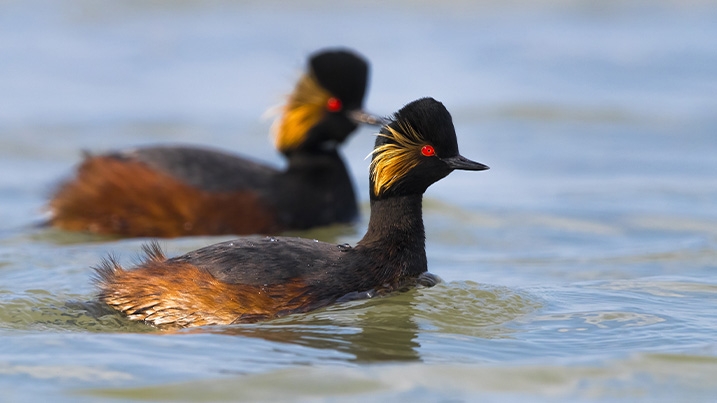
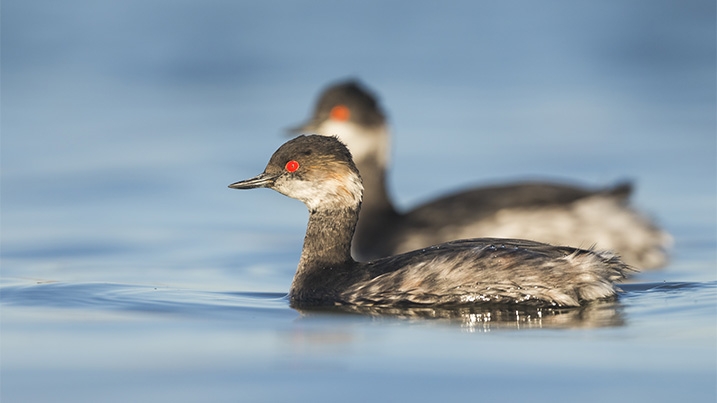
Little grebe
(Tachybaptus ruficollis)
The smallest grebe found in the UK, with a short neck, rounded body and powder-puff rear, these shy birds are mostly resident across western Europe. In the breeding season they can be found on small bodies of water, even ditches, often not seen but their bubbling call heard. In breeding plumage, they sport a dark cap and back, surrounding a chestnut neck, which changes to buff-brown in winter, when they often move to larger bodies of water or coasts.
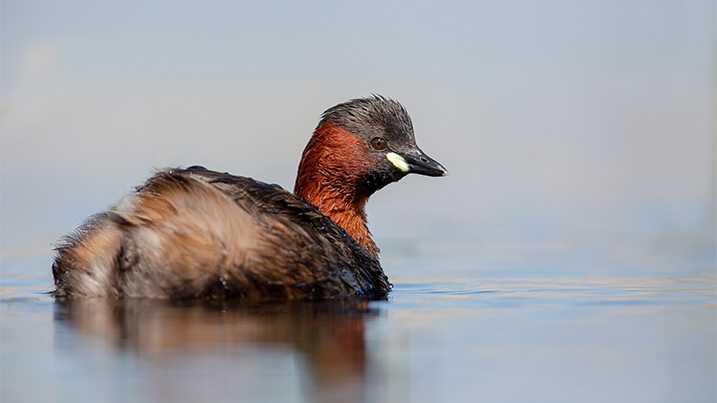
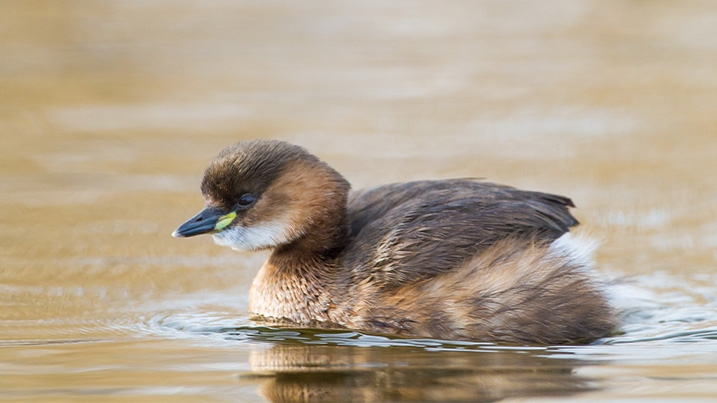
Great crested grebe
(Podiceps cristatus)
The largest and commonest grebe in the UK, breeding plumage displays red and black head plumes, in winter just a black cap. Often found on lakes where they may stay year-round but in winter, they can often be seen from the coast, too.
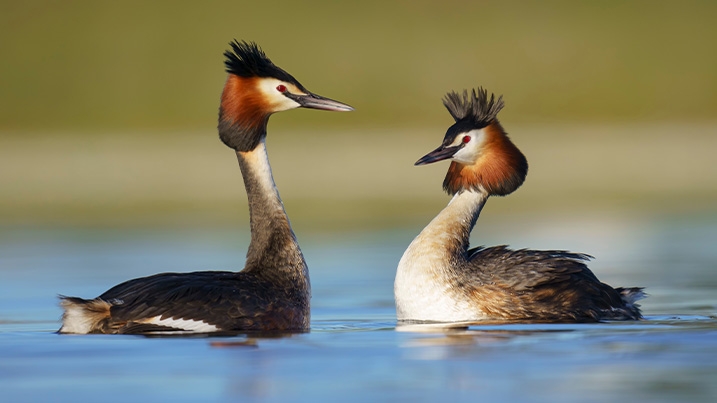
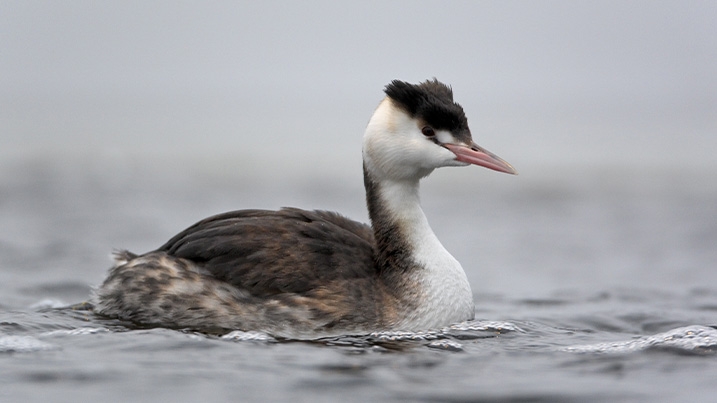
Red-necked grebe
(Podiceps grisegena)
Similar to great crested grebe but slightly smaller, with a stockier neck and powder-puff sides. They breed across northern and eastern Europe, being seen on UK lakes and coasts in the winter, often with an eastern bias, when the plumage shows a dark neck, blackish cap and yellow bill base.
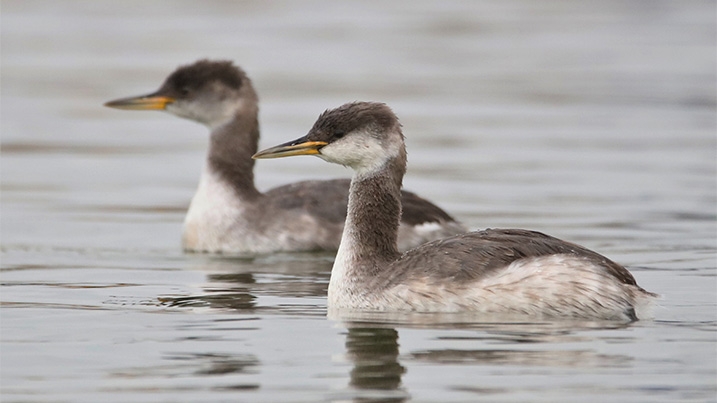
Cormorant
(Phalacrocorax carbo)
Frequently seen drying their outstretched wings after diving; they don’t have waterproof feathers. Larger body size, thick neck, wedge-shaped head and deep bill separate them from shags. Nesting communally on cliff-faces and in lakeside trees, they use similar habitats when not breeding. Can often be seen roosting and nesting communally around lakes or at the coast.
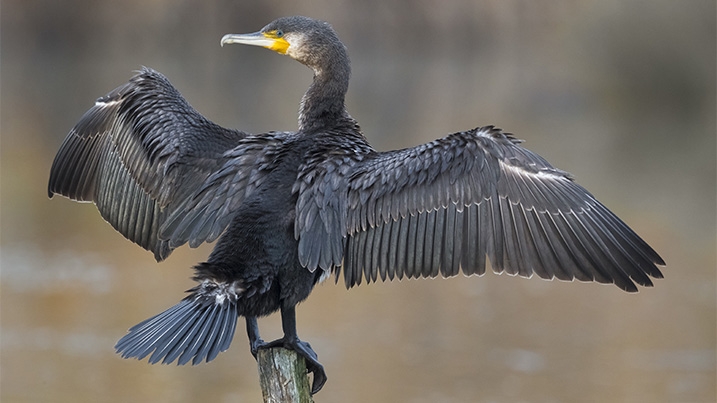
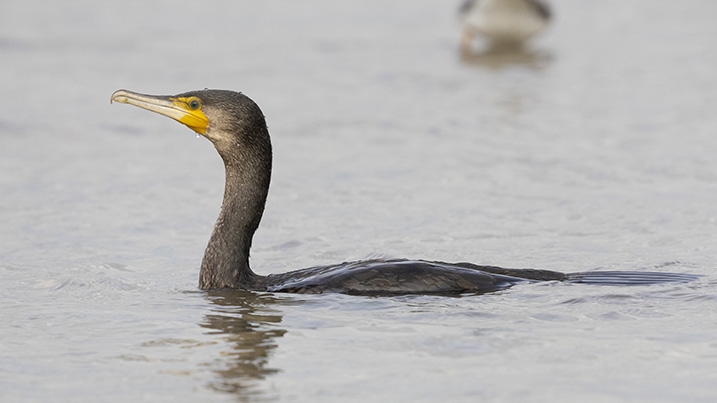
Shag
(Phalacrocorax aristotelis)
Like cormorant, can be seen drying their wings outstretched, but have a smaller body size, have a thinner neck and bill with a more rounded head. Nests communally on cliff faces, they can be seen year-round at coasts, but it’s rare to see them on inland freshwater.
